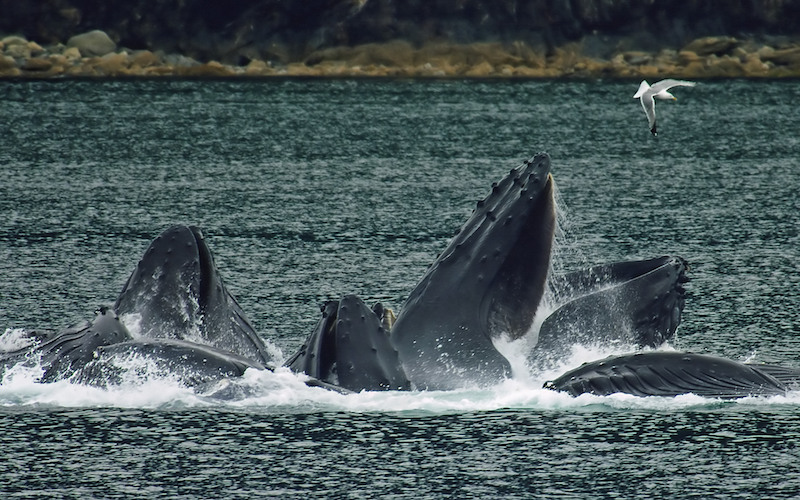
Features
Restocking
Hungry whales compromise Alaskan salmon hatchery
July 24, 2015 By David Scarratt
 At the hatchery’s release sites the whales have learned that they can use the shoreline as a backdrop to trap vast numbers of tiny fry and eat them before they can head out to sea. Whales feasting on hatchery release of chum may have had a severe affect on returns
At the hatchery’s release sites the whales have learned that they can use the shoreline as a backdrop to trap vast numbers of tiny fry and eat them before they can head out to sea. Whales feasting on hatchery release of chum may have had a severe affect on returnsThis year’s early season, hatchery-based run of chum salmon to part of southeast Alaska, has proved so disastrously low that the Sitka-based Northern Southeast Regional Aquaculture Association (NSRAA) shut it down after just three days fishing.
Former hatchery operator Steve Reifenstuhl, who is now the association’s general manager, said the problem seems to be due in large part to an increase in numbers of humpback whales which feed in the area.
Reifenstuhl said that the local humpback whale population has been increasing by about 7% a year for at least the last 10 years. Humpbacks, he said, are very smart, and it’s just taken a few of them to figure out an effective [feeding] strategy, which does massive damage to the chum- and pink- salmon fry released annually from the Hidden Falls Hatchery.
The hatchery has been forced to develop its own strategies to counter that, said Reifenstuhl, but a few of the whales have learned that at the hatchery’s release sites they can use the shoreline as a backdrop to trap vast numbers of the tiny fry and eat them as they head out to sea. He thinks there may be other factors that make Hidden Falls fry so vulnerable to the attacks. Other hatcheries’ release sites don’t experience this to the same extent.
The Hidden Falls hatchery on the eastern side of Baranof Island has released 100 million fry annually, and has normally seen a return of about 1.5-1.7 million adult chum. That was until last year when the return numbers plunged to about 470,000 fish; less than a third of the usual number. This year Reifenstuhl said that returns could be about half of that – roughly 250,000 chum – based on the first three openings catch of 32,000 by the 45-48 boats in the fleet. He reckons there should be enough fish to give the hatchery its required chum broodstock. However, the hatchery could be headed for tragedy.
“We can’t operate this program unless we get a return of 1-2% marine survival,” he said. “Last year it was way down, and this year it’s going to be way under that… maybe a quarter of 1%. It’s not enough to sustain the program.”
– Quentin Dodd
Print this page
Advertisement
- Cryopreservation – a modern tool with many uses…
- Genetic marker could help streamline single-sex breeding programs





